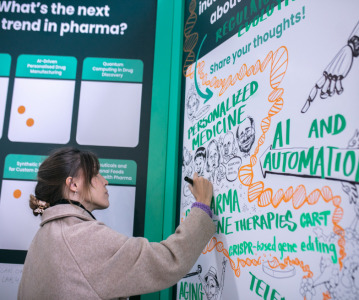Competitio?n Intensifie?s as Pharma Companies Race to Launch Type 2 Diabetes Drugs

The global pre-diabetes population is three times the size of the current diabetes patient population. A tremendous increase in the pandemic’s prevalence is in store, and the industry is in dire need of better tools to prevent disease progression. Identifying the precursors to fully developed diabetes through prophylactic therapy is vital, as an unexplored market segment driven by an ever-growing customer base. Meeting patients’ needs through the inclusive therapeutics approach allows practitioners to prevent and manage disease progression. This is crucial in the shift to prevention over treatment in the healthcare market and aligns with the new paradigm of physician quality over quantity.
According to Frost & Sullivan’s Competitive Intelligence research, "Analysis of the Global Type 2 Diabetes Therapeutics Market," 15 new drugs for type 2 diabetes are in late-stage development (Phase III and preregistration). The analysis outlines opportunities in the market and the industry’s future through an international evaluation of current drugs and those in the pipeline.
“The type 2 diabetes market continually advances, primarily due to the dominance of obesity,” says Frost & Sullivan Life Sciences Global Program Director Jennifer Lazar Brice. “Current studies of this increasingly competitive market are limited in their approach. Seeing this missed opportunity, we began addressing such markets in a new way. Our repositioned Life Sciences program includes therapeutic product and pipeline analyses and services focused on our clients’ proactive competitive intelligence goals. Among the many trends we see coming, the pharma industry will address the ubiquity of diabetes by a steady stream of new product launches during the next 6 years.”
New diabetes treatment options meet many unmet patient needs. Subsequently, payers and regulatory authorities raise the bar for approval and reimbursement even higher, and the risk of regulatory or commercial failure then increases. Therefore, in a crowded market, new participants must demonstrate a spotless safety profile, along with superior disease control to ensure a competitive position. This is particularly important in the US where the diabetes patient population continues to expand, as is the case in several other countries, such as the UK, Germany, Spain, China, South Korea and India. The total health expenditures globally allocated to diabetes are eventually more than these regions can afford, as we see inefficient healthcare budgets addressed by expansive measures such as the Affordable Care Act in the US.
“Physicians desperately need patient-friendly tools that enable aggressive yet safe management of the disease to prevent complications that are costly to both the patients’ quality of life and the healthcare system,” says Frost & Sullivan Life Sciences Senior Industry Analyst Debbie Toscano. “Due to the evolutionary nature of diabetes, many patients must progress through continuously altered regimens to maintain control of their disease. Therefore, therapies that preserve or restore beta cell function, postpone or prevent disease progression, and allow patients to remain on a single therapy will be the game-changers in the years ahead, based on what the market demands and needs today.”
"Analysis of the Global Type 2 Diabetes Therapeutics Market" is part of Frost & Sullivan’s newly repositioned Life Sciences Growth Partnership Service program, which now includes the Competitive Intelligence research service. All therapeutic research services included in this subscription provide analyses and dashboards for competitive factors, clinical trials, timelines, M&As, products and vendors, as well as companies to watch, position-altering strategies, and market opportunities and predictions. The research also includes company and key opinion leader interviews, recruitment statuses, safety/efficacy analyses, market milestones, and best practices in the industry. This Competitive Intelligence enables companies to better position their sales and marketing strategy towards clinical development programs and prioritisations.
Related News
-
News Lessons from CPHI Milan 2024: Sunny Intervals for Pharma Manufacturing?
As the 2024 CPHI conference wrapped up in Milan, we caught up with L.E.K. Consulting – a global strategy consulting firm with deep expertise in pharma manufacturing – to discuss evolving market perspectives and business outlook. -
News US BIOSECURE Act passed by US House of Representatives
The controversial act, which has already impacted several foreign companies operating in the US, was passed by the House of Representatives on September 9, 2024. It is now headed for the US Senate before it can be signed into law by President Joe Biden... -
News Pharma Supply Chain People Moves
The latest appointments, promotions, and structural changes across the pharmaceutical supply chain. -
News Drug prices agreed upon as part of the US Inflation Reduction Act
The Inflation Reduction Act brought into constitution by the Biden administation in 2022, which proposed a drug price negotiation between the government and pharmaceutical companies, has reached it's first agreement. -
News BIOSECURE Act continues to loom over Chinese pharma manufacturers
With the US BIOSECURE Act on its way to passing into legislation, Chinese companies are facing declining revenues within the first half of 2024 as US pharmaceutical and healthcare companies pull their businesses from the country. -
News Ophthalmologic drug product Eylea faces biosimilar threats after FDA approvals
Regeneron Pharmaceutical’s blockbuster ophthalmology drug Eylea is facing biosimilar competition as the US FDA approves Biocon’s Yesafili and Samsung Bioepis/Biogen’s Opuviz. -
News ONO Pharmaceutical expands oncology portfolio with acquisition of Deciphera
ONO Pharmaceutical, out of Japan, is in the process of acquiring cancer-therapy maker Deciphera Pharmaceuticals for US$2.4 billion. -
News First offers for pharma from Medicare drug price negotiations
Ten high-cost drugs from various pharma manufacturers are in pricing negotiations in a first-ever for the US Medicare program. President Biden’s administration stated they have responded to the first round of offers.
Position your company at the heart of the global Pharma industry with a CPHI Online membership
-
Your products and solutions visible to thousands of visitors within the largest Pharma marketplace
-
Generate high-quality, engaged leads for your business, all year round
-
Promote your business as the industry’s thought-leader by hosting your reports, brochures and videos within your profile
-
Your company’s profile boosted at all participating CPHI events
-
An easy-to-use platform with a detailed dashboard showing your leads and performance




.png)
.png)

.png)